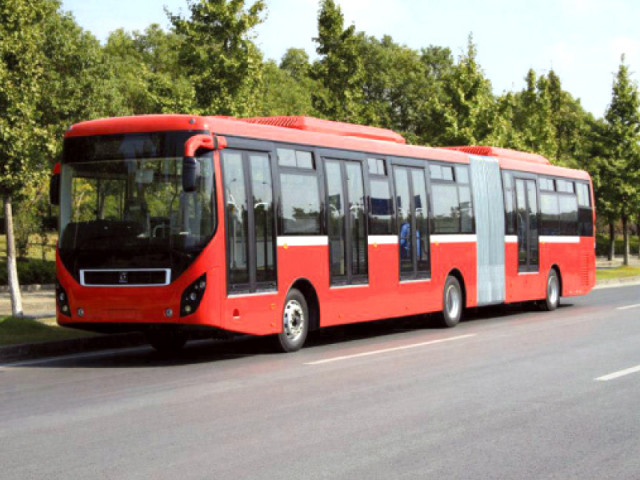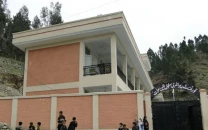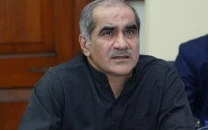Metro bus project: Rewriting facts to suit narratives
CDA reply submitted to SC ignores entire section of master plan; flips facts to suit proposal.

File photo of a metro bus. PHOTO: FILE
The city managers appeared to have misled the Supreme Court of Pakistan by submitting a falsified reply in a case concerning violations of the capital’s master plan while developing a dedicated route for the Rawalpindi-Islamabad metro bus project.
Documents available with The Express Tribune — the report submitted by the CDA to the apex court and excerpts of Islamabad’s Master Plan relating to guidelines for future expansion of freeways and principal avenues of the capital — show that the city managers misquoted the master plan in the report.
The Supreme Court of Pakistan took notice on March 14 after Senator Mushahid Hussain wrote an application mentioning the alleged violations of the city’s master plan due to the current configuration of the project.
The court had sought reply from the CDA on the issue, which was submitted on March 18.
CDA high ups would be well-aware that the reply makes no mention of a section of the master plan titled, “Traffic Width of Roads and Right of Way”, which is why the CDA Planning member — who was responsible to furnish the facts — refused to sign the report.
As a result, a relatively junior officer was persuaded by CDA high ups to sign the reply, essentially turning him into a scapegoat.
In its reply, the CDA mentioned the expansion of 9th Avenue within the right of way of the existing road. The CDA also submitted a definition of the word ‘right of way’ (ROW) --- an area reserved along the principal avenues and freeways for future expansion of the roads.
The definition also says that no permanent or temporary structure can be developed within ROW of the road. However, city managers conceded that around 14 bus stops to facilitate boarding and lodging of passengers would be erected within ROW.
But other facts, such as the rules governing the direction in which avenues can be expanded and the relevant procedures stated in the master plan for phase-wise expansion of an avenue were deliberately left out.
How a principal road widens under the master plan
Town planner Apostolos Doxiadis’s master plan section on “Traffic Width of Roads and Right of Way” clearly defines the five-phased expansion process of a principal road of 600 feet width.
Ninth Avenue is one of these principal roads.
In the first phase, the book provides for the construction of two-lane service roads on both sides of the planned avenue. The first phase applied for first decade, stretching from 1961 to 1970.
In the second phase, covering the 1970’s, a dual-carriageway principal avenue with an 88-foot central median was to be established.
The Third phase allows for a further inward move, with another lane being carved out of the central median on each sides of the dual carriage, pushing the main avenue to six lanes. This would ultimately reduce the median’s width from 88 feet to 64 feet.
In the fourth phase, there are two options --- either to add another lane on each side of the avenue, or to dualise the existing service roads.
The fifth and final phase provides for an eight-lane main avenue and dual carriageway service roads alongside it. The fourth lane would also be carved out from the central median, reducing its width to 40 feet.
The master plan clearly indicates that when a principal avenue is completed in line with the rules, there will be 116-foot green belts separating the avenue from the service roads on either side.
But these facts were curiously left out of the report submitted to the SC, with the document stating that the entire ROW of an avenue — 600 feet — is meant for future road expansion.
Currently, there is a 125-foot greenbelt on either side of 9th Avenue, which according to Nespak’s design for the project, would be consumed while adding three lanes on the side of the avenue parallel to the 8-series of sectors.
“The master plan provides for inwards expansion, but the court was instead told that a road is expanded outwards by destroying green belts,” said a senior CDA Planning wing official.
“If the court accepts this reply, it will become set precedent,” he said, adding that in future, there will be no green belts along any city roads.
Supreme Court Registrar Tahir Shahbaz said he does not have enough knowledge of the issue. “I have nothing to do with it. The judges will look into the [factuality of the] reply,” Shahbaz said.
Shahbaz is a former CDA chairman.
The Express Tribune tried to contact CDA Planning Member Waseem Ahmad Khan by phone on multiple occasions, but he was not available for comment.
Earlier, The Express Tribune reported that around 1,080 trees will be destroyed while executing this project.
Published in The Express Tribune, March 31st, 2014.



















COMMENTS
Comments are moderated and generally will be posted if they are on-topic and not abusive.
For more information, please see our Comments FAQ